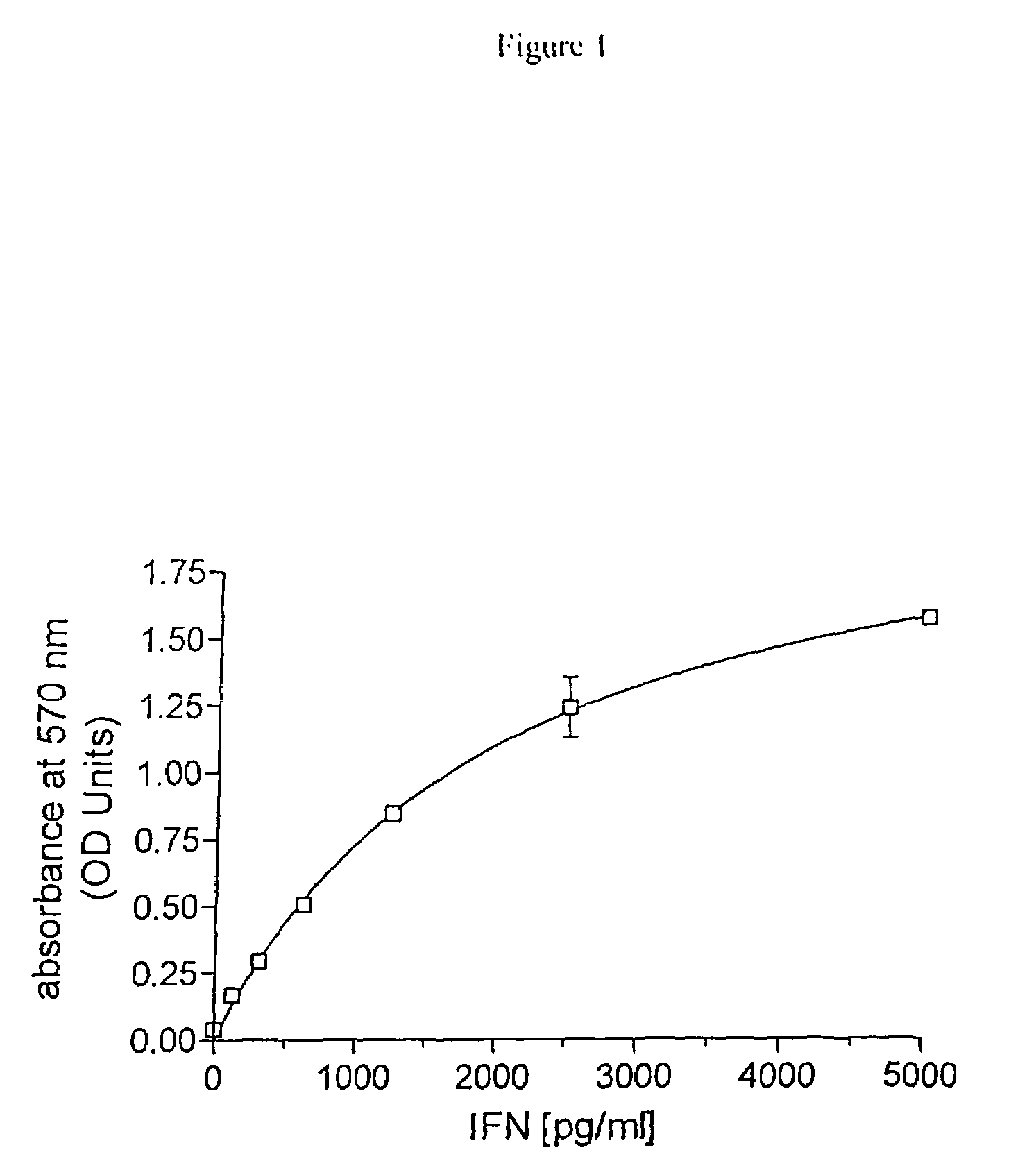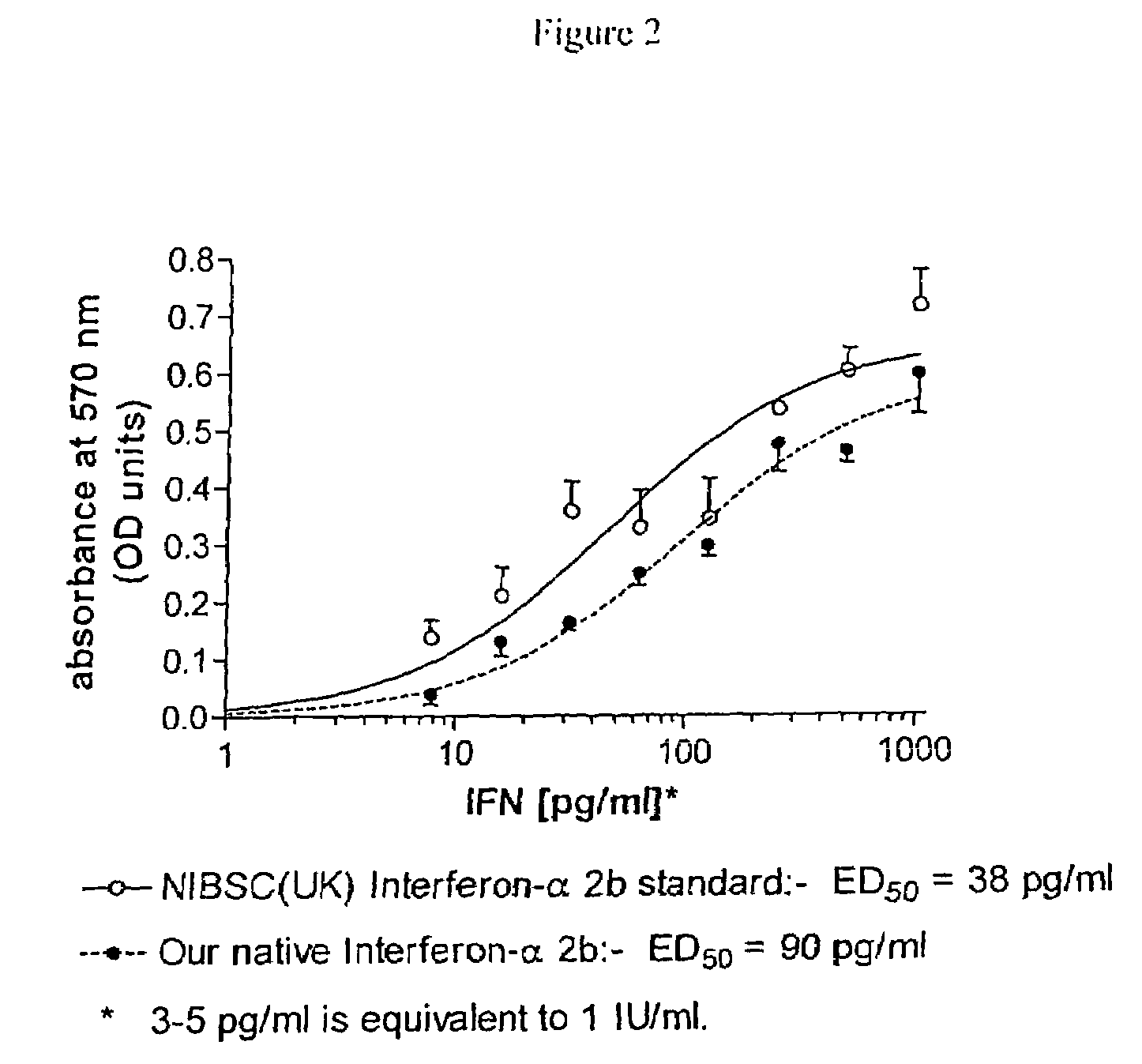Conjugated biological molecules and their preparation
a technology of conjugated biological molecules and conjugates, which is applied in the direction of antibody medical ingredients, peptide/protein ingredients, immunological disorders, etc., can solve the problems of reagents that have relatively short half-lives in aqueous media, and many therapeutically active molecules do not possess the properties required
- Summary
- Abstract
- Description
- Claims
- Application Information
AI Technical Summary
Benefits of technology
Problems solved by technology
Method used
Image
Examples
example 1
Synthesis of Polymer Conjugating Reagent
p-Nitro-3-piperidinopropriophenone hydrochloride: C14H19ClN2O3
[0091]To a single-neck 250 ml round-bottom flask was added p-nitroacetophenone (16.5 g), paraformaldehyde (4.5 g), piperidine hydrochloride (12.1 g), absolute ethanol (100 mL) and a magnetic stir bar. To the stirred heterogeneous mixture was added hydrochloric acid (37 wt % in water, 1 mL) and the solution was heated to reflux under nitrogen. After a 1-2 h period more paraformaldehyde (3.0 g) was added. The solution was allowed to reflux for approximately 18 h during which time further paraformaldehyde was added (3.0 g). After allowing the reaction solution to cool a crystalline solid settled that would not dissolve upon further refluxing. The solid was isolated by filtration and recrystallised using very hot methanol to afford large yellow crystals (10.9 g).
[0092]1H NMR (DMSO-d6) δ 1.34-1.50 (m, 1H), 1.64-1.79 (m, 2H) , 1.79-1.94 (m, 4H), 2.89-3.05 (m, 2H), 3.41 (q, 2H), 3.51-3.54...
example 2
Synthesis of Polymer Conjugating Reagent
p-Carboxy-3-piperidinopropriophenone hydrochloride
[0100]To a 250 mL single-neck round-bottom flask was added p-acetyl benzoic acid (10 g) and piperidine hydrochloride (7.4 g), 100 mL of absolute ethanol and a magnetic stir bar. To the stirred heterogeneous mixture was added concentrated hydrochloric acid (1 mL) and the solution was then heated to reflux under nitrogen. Paraformaldehyde (3.7 g) was added to the flask and refluxing continued for approximately 1.5 h. A homogeneous solution formed to which was added more paraformaldehyde (3.7 g). Heating was continued for approximately 6 h during which time further paraformaldehyde was added (3.7 g.). The reaction solution was allowed to cool to room temperature and left for 1 week. A white solid was isolated by filtration of the cooled reaction mixture. An attempt was made to crystallise the solid after dissolving in very hot methanol. An insoluble product (1.96 g) was isolated by filtration and ...
example 3
Reaction of 4-methylbenzenethiol and α-methoxy-ω-4-[2,2-bis[(p-tolylsulfonyl) methyl]acetyl]benzamide poly(ethylene glycol)
[0109]The polymer conjugating reagent, α-methoxy-ω-4-[2,2-bis[(p-tolylsulfonyl)methyl]acetyl]benzamide poly(ethylene glycol) (2000 g / mol) (30 mg, 12.1 μmol, 1 eq.) and 4-methylbenzenethiol (3 mg, 24.2 mmol, 2 eq.) were dissolved in deuterated chloroform (approximately 0.75 mL). To the homogeneous solution was then added triethylamine (1.7 μL, 12.1 μmol, 1 eq.). The reaction mixture was stirred and a H-NMR spectrum was obtained. The resulting spectrum confirmed that addition of the 4-methylbenzenethiol to the polymer conjugating reagent had occurred. A similar reaction was conducted with propane triol.
PUM
| Property | Measurement | Unit |
|---|---|---|
| volume | aaaaa | aaaaa |
| temperature | aaaaa | aaaaa |
| temperatures | aaaaa | aaaaa |
Abstract
Description
Claims
Application Information
 Login to View More
Login to View More - R&D
- Intellectual Property
- Life Sciences
- Materials
- Tech Scout
- Unparalleled Data Quality
- Higher Quality Content
- 60% Fewer Hallucinations
Browse by: Latest US Patents, China's latest patents, Technical Efficacy Thesaurus, Application Domain, Technology Topic, Popular Technical Reports.
© 2025 PatSnap. All rights reserved.Legal|Privacy policy|Modern Slavery Act Transparency Statement|Sitemap|About US| Contact US: help@patsnap.com



